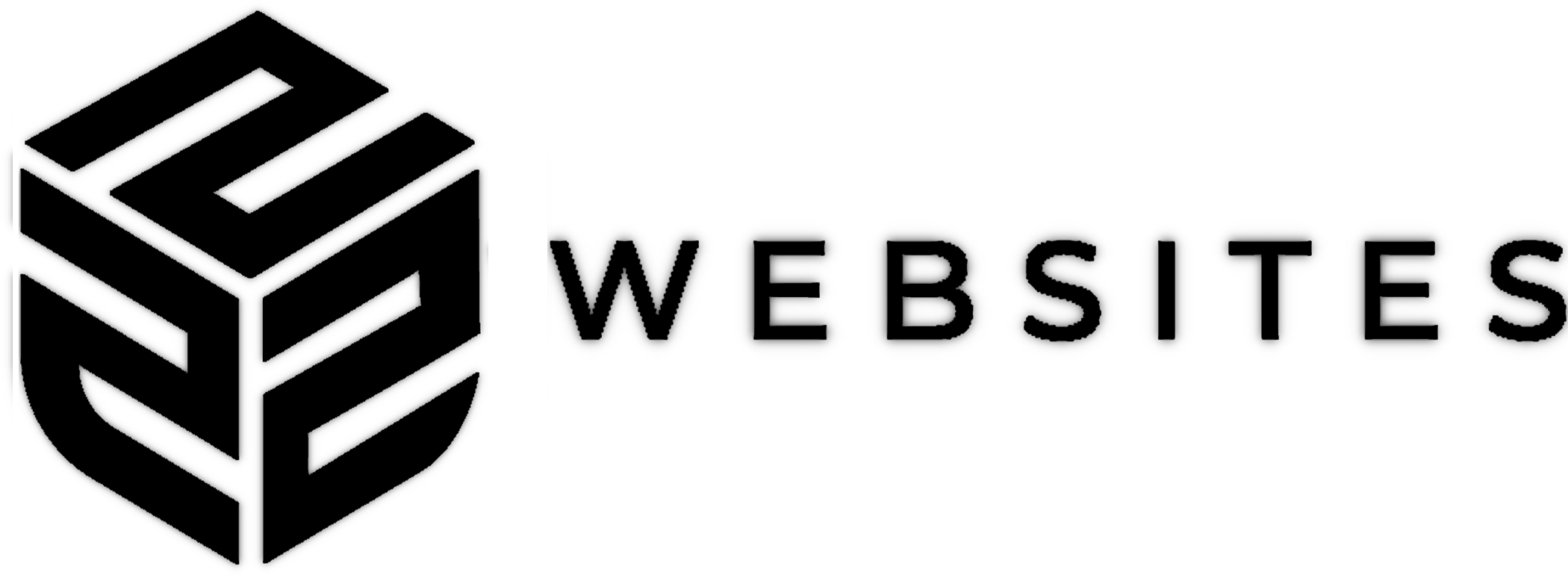Stay Updated with the Latest Insights and Tips
Welcome to our blog page! At 222 Websites, we share valuable content designed to help your business thrive in the digital world. From web design trends to SEO strategies and digital marketing tips, our blog is your go-to resource for staying informed and ahead of the competition.

E-Commerce Website Design Best Practices
Affordable E-Commerce Website Design for Small Business: Fast, Local, Results-Driven
Small businesses need e-commerce website design that turns visitors into paying customers without blowing the budget or creating technical headaches. This guide lays out practical, high-impact design tactics — from mobile-first layouts and product page tweaks to simplified checkout flows, local SEO, and AI-assisted marketing — so small sellers can increase sales predictably. You’ll get step-by-step techniques for improving product pages, checking Core Web Vitals, adding product schema, and choosing the right delivery model—subscription agency or DIY builder. We’ll also explain why local know-how matters for Charleston, WV businesses, show realistic AI use cases that move the needle, and share client results tied to ongoing support. By the end you’ll have a clear checklist, comparison tables, and criteria to choose the best path for steady e-commerce growth.
Best Practices for E-Commerce Website Design for Small Businesses
Effective e-commerce design mixes fast technical performance, persuasive product presentation, and a smooth purchase path to lift conversions and search visibility. Speed and Core Web Vitals cut abandonment; structured product data and visible trust signals boost discoverability and buyer confidence. Below is a focused list of the most useful practices you can apply right away, followed by targeted guidance on responsive layouts and product/checkout features that directly affect conversion. Start with these fundamentals, then use analytics to iterate and improve.
Essential design and technical priorities for every small e-commerce site:
Mobile-first responsive design: build layouts and touch targets with phone shoppers in mind.
Site speed & Core Web Vitals: compress images, use caching, and streamline critical rendering.
Product page optimization: strong hero images, benefit-driven descriptions, and obvious CTAs.
Checkout friction reduction: guest checkout, saved payment options, and clear progress indicators.
Structured data & schema: add product markup to enable rich snippets and better indexing.
Security & trust signals: SSL, simple return info, and visible customer reviews.
Use this checklist for quick wins, then move into ongoing tests and improvements. The sections that follow explain responsive design benefits and specific product/checkout features to implement next.
How Responsive Design Improves Small Business Online Stores

Responsive design makes your site adapt smoothly across devices, which matters because many purchases begin on mobile. Fluid grids, sensible breakpoints, and optimized images with lazy loading lower mobile bounce rates and boost engagement — more time on site and more cart adds. Implementations that respect Core Web Vitals (fast Largest Contentful Paint, minimal Cumulative Layout Shift, and quick First Input Delay) also help organic rankings. Start by auditing breakpoints, converting images to modern formats, and using responsive srcset so mobile shoppers see faster, more stable pages.
Key Features That Improve Product Pages and Checkout
Product pages convert when they combine clear benefits, trust signals, and friction-free actions: a bold hero image, benefit-led copy, organized specs, and visible social proof. Add concise microcopy for shipping, returns, and security badges so answers are on the page. Use structured data for price, availability, and reviews to improve SERP listings. For checkout, offer guest checkout, forms optimized for autofill, multiple payment options, and a visible progress bar to cut abandonment. Together, these elements create a smooth product-to-purchase flow that raises average order value and conversion rates. The next section explains subscription models that make these improvements affordable for small sellers.
How Small Businesses Benefit from Affordable E-Commerce Development Services
Affordable e-commerce development services lower upfront cost and operational friction by bundling hosting, updates, and security into predictable monthly plans so owners can focus on selling. Subscription approaches reduce the barrier to entry with steady monthly spend while enabling fast launches and data-driven iteration. For many small sellers, predictable pricing, routine maintenance, and built-in marketing setup shorten time-to-revenue and keep technical debt manageable. The table below compares common subscription features and shows how they map to small-business needs.
Package FeatureCharacteristicValue for Small BusinessTurnaroundRapid build cyclesFaster time-to-market and earlier revenuePricing modelPredictable monthly pricingSimplifies budgeting and reduces upfront costsUpdates & editsUnlimited update requestsLess owner workload and continuous improvementHosting & securityIncluded monitoring and free SSLBetter uptime and buyer trustMarketing setupGBP and blog setup includedImproves local visibility and content foundation
Bundled services streamline operations and reveal true costs. For small teams, predictable service elements free owner time for inventory, marketing, and customers. The next section explains why subscription packages often fit tight budgets.
Why Subscription Website Packages Work Well for Small Businesses
Subscription packages replace large upfront fees with a manageable monthly cost that typically includes hosting, updates, and basic marketing setup. That predictability reduces risk for businesses that prefer spreading expenses and getting continuous improvements through unlimited updates and monitoring. Bundled items like blog setup, free SSL, and Google My Business configuration also speed up discoverability and initial sales. If you’re weighing one-off projects against subscriptions, the steady update cadence and built-in monitoring make gradual, measurable optimization easier and tie improvements directly to sales.
How Fast Website Development Supports Small Business Growth
Fast development shortens the launch-to-revenue loop by getting an MVP live quickly so you can test with real customers. Rapid builds help merchants validate product-market fit, collect behavior data, and prioritize improvements based on analytics rather than guesswork. Launching in a week or two means you can catch seasonal demand sooner and start paid marketing earlier, which helps early cash flow. Pair rapid delivery with a post-launch optimization plan so changes focus on conversion lift and SEO gains, not long development cycles.
Why Local Web Design in Charleston, WV Matters

Local web design accounts for buyer habits, community context, and geo-intent search — important for Charleston businesses that mix online sales with foot traffic. Localized content, region-specific keywords, and a well-optimized GBP profile increase relevance for nearby searchers and improve local click-through rates. Designers who know the local market can set up navigation, shipping, and pickup messaging that reflect how Charleston customers search and convert. Below are practical local SEO tactics and the benefits of working with a Charleston-based agency for closer collaboration.
Quick local SEO wins for Charleston e-commerce stores:
Keep your Google Business Profile updated with accurate categories and regular posts.
Build localized product or collection pages using Charleston-focused keywords.
Add local schema and service-area markup to signal geographic relevance.
These quick wins increase local visibility and drive more qualified traffic to both online and in-person touchpoints. The next section explains how those tactics translate into measurable local search performance.
How Local SEO Improves E-Commerce Visibility for Charleston Businesses
Local SEO boosts visibility by matching site content and structured data to the terms nearby customers use when searching for products or pickup options. Product pages that include local modifiers, local schema, and clear pickup/delivery details are more likely to appear for geo-intent queries. Consistent citations and a well-maintained GBP also strengthen the trust signals that influence local pack rankings. Local content — event pages or community-focused blog posts — builds topical authority. Together these tactics create a clear path from discovery to purchase.
Advantages of Choosing a Charleston-Based Web Design Agency
Working with a Charleston agency brings local market know-how, quicker communication, and the option for in-person meetings when needed. Local partners understand regional suppliers, shipping quirks, and customer preferences that affect product categories and promotion timing. Faster support and contextual reputation management reduce downtime and make iterative improvements more practical. Those advantages translate into more targeted traffic and better conversion rates for merchants who sell online and serve their community.
How AI-Powered Marketing Drives Small Business E-Commerce Growth
AI speeds up keyword research, content optimization, personalization, and automation so small teams can increase discoverability and conversions without a proportional increase in hours. Tools that cluster keywords, generate content briefs, and automate schema let teams scale on-page SEO and keep product pages aligned with search intent. Personalization and predictive audiences tailor recommendations and email flows to boost average order value and repeat purchase rates. Below we outline specific AI tools that improve SEO and content, and show how AI-driven automation lifts conversions.
AI applications that directly affect e-commerce growth:
Keyword research & content briefs: AI clusters long-tail intent for better product copy.
Personalization engines: AI-powered recommendations raise AOV and retention.
Automation & analytics: AI tunes ad bids and email flows for measurable conversion gains.
These examples show how AI fits into SEO and marketing stacks to yield measurable uplifts. The next section covers technical SEO improvements enabled by AI tools.
AI Technologies That Improve SEO and Content for Online Stores
NLP-driven keyword clustering, automated content briefs, and schema-generation tools speed content production while keeping search intent intact. These tools analyze search behavior and competitor signals to suggest target phrases, meta tags, and structured data that increase the chance of rich results. AI can create initial drafts or meta suggestions that your team refines, saving time and keeping large catalogs consistent. Built into a performance-driven workflow, these tools enable continuous on-page optimization guided by metrics.
How AI Boosts Lead Generation and Conversion
AI powers smarter chat and qualification flows, predictive audience targeting, and personalized email automation that adapts to user behavior. Chatbots capture intent in real time, route qualified leads to staff, and schedule follow-ups to raise contact rates. Predictive models identify high-value segments for retargeting, while tailored recommendations and post-purchase emails increase cross-sell and repeat purchases. Tracking lifts in open rates, CTRs, and conversions helps small businesses focus AI investment on tactics with clear ROI. The next section ties these capabilities to real client outcomes and support services.
Proven Success Stories from 222 Websites’ E-Commerce Work
Local case summaries show how targeted design and ongoing support translate into measurable gains in sales, traffic, and conversion rates. 222 Websites offers subscription services with fast turnaround and done-for-you features like unlimited updates, security monitoring, blog setup, free SSL, and Google My Business setup to support sustainable growth. Below is a short case table showing client challenges, solutions, and the results achieved through focused design and marketing work.
ClientProblemSolution ImplementedResultLocal retailer (Charleston)Low mobile conversionsMobile-first redesign, image optimization, product schemaNoticeable uplift in mobile conversions and better SERP visibilitySpecialty goods shopHigh cart abandonmentSimplified checkout, guest checkout, trust badgesFewer abandoned carts and smoother completionsNeighborhood bakeryLimited local discoverabilityGBP optimization, localized landing pages, blog setupStronger local search presence and more store inquiries
These examples show how targeted technical fixes and steady maintenance create real business results. The next section outlines the ongoing support features that sustain those gains.
How Charleston Businesses Grew Sales with Custom E-Commerce Sites
Charleston merchants who invested in custom e-commerce focused on the highest-impact drivers — mobile responsiveness, product imagery, and a streamlined checkout — then layered on local SEO and content to capture nearby demand. The typical rollout began with a site audit, followed by prioritized fixes (speed, images, schema), then A/B tests on product pages and checkout flows. Combined with GBP updates and neighborhood-focused blog content, these steps increased visibility and conversions. That approach let owners reinvest early revenue into larger assortments and targeted advertising, creating a positive growth cycle.
Ongoing Support and Updates from 222 Websites
Sustaining e-commerce performance requires routine care. Services that include unlimited update requests, security monitoring, and regular content updates remove technical friction for busy owners. Ongoing monitoring prevents downtime and keeps trust signals — like valid SSL — intact, while fresh product pages and blog posts support SEO. Blog setup and Google My Business configuration help maintain a steady local content strategy that drives discovery and social proof. Managed support lets owners focus on inventory and customers while the technical base stays secure and optimized.
How 222 Websites Compares to DIY Platforms for Small Businesses
Comparing subscription agencies to DIY platforms reveals trade-offs in ownership, time investment, SEO outcomes, and maintenance burden. Subscription services usually bundle managed hosting, security, and ongoing optimization; DIY platforms lower upfront costs but shift maintenance and SEO work to the owner. The table below summarizes practical differences to help you choose the best path.
ApproachAttributePractical ImpactSubscription-based agencyOwnership & setupManaged environment with less owner time; faster professional launchSubscription-based agencyTime investmentLow day-to-day owner time; routine updates handledSubscription-based agencySEO & scalabilityProfessional SEO and schema; easier to scale catalogsDIY platformOwnership & setupOwner retains control but assumes technical responsibilitiesDIY platformTime investmentHigher owner time for maintenance and troubleshootingDIY platformSEO & scalabilityTemplate limits may restrict advanced SEO and integrations
Professional subscriptions reduce technical debt and free owner capacity. DIY can be cost-effective if the owner is ready to handle ongoing tasks. The next section helps you weigh those trade-offs.
Key Differences Between Subscription Models and DIY Builders
The main differences are support, continuous optimization, and long-term SEO outcomes. Subscription models deliver monitoring, unlimited updates, and data-driven improvements; DIY builders often require owners to learn and execute technical and SEO work themselves. Subscriptions generally enable faster professional launches and built-in marketing setup, while DIY may be cheaper at first but limit custom integrations and advanced schema. If time savings and predictable performance matter, managed subscriptions usually offer better long-term ROI. DIY can work for owners with technical bandwidth and simple catalogs.
Why Choose Professional Services for Long-Term E-Commerce Success
Professional services support strategic growth by integrating advanced tools, running iterative SEO improvements, and handling security and performance monitoring that DIY setups commonly miss. Agencies bring data-driven processes and AI-enabled workflows to scale catalogs, optimize content, and run paid campaigns more efficiently than most small teams alone. Avoiding technical debt and keeping a steady optimization rhythm are significant advantages of subscription-based partners. If you’re unsure which path fits, contact 222 Websites to call, message, or schedule an appointment to discuss your growth plan.
Reduce maintenance burden: Let professionals handle updates and monitoring so you can focus on customers.
Improve SEO outcomes: Agencies implement schema and content strategies that scale beyond templates.
Enable faster iteration: Managed teams run tests and roll out improvements without long delays.
Frequently Asked Questions
1. What are the essential elements of a successful e-commerce website for small businesses?
A successful small-business store includes a clear, user-friendly interface, mobile responsiveness, fast load times, and secure payment options. Strong product photos and helpful descriptions improve engagement. SEO basics — relevant keywords and structured data — help people find you. Clear returns and prompt customer service build trust and encourage repeat purchases.
2. How can small businesses effectively measure the success of their e-commerce website?
Measure success with metrics like conversion rate, average order value, and retention. Use Google Analytics to track behavior, traffic sources, and sales. Monitor Core Web Vitals for user experience. Regular analysis reveals where to focus improvements for better performance and higher revenue.
3. What role does content marketing play in e-commerce success for small businesses?
Content marketing drives traffic, builds brand awareness, and nurtures customers. Helpful blog posts, product guides, and videos attract searchers and establish trust. Good content supports SEO and moves visitors through the sales funnel, increasing conversions and repeat business.
4. How can small businesses leverage social media for e-commerce growth?
Use social media to showcase products, engage your audience, and send traffic to your store. Instagram and Facebook work well for visual merchandising and stories. Targeted ads find likely buyers, while community interaction gathers feedback and builds loyalty.
5. What are the benefits of using AI in e-commerce for small businesses?
AI helps personalize recommendations, forecast inventory needs, and optimize marketing. It can analyze customer data to suggest products, predict demand to avoid stockouts, and automate ad and email performance tuning — all of which raise engagement and sales while saving time.
6. How important is customer feedback for improving an e-commerce website?
Customer feedback is essential. Surveys, reviews, and direct messages reveal UX issues, product gaps, and service improvements. Acting on feedback increases satisfaction, trust, and conversions. Regularly review feedback to stay aligned with customer expectations.
7. What strategies can small businesses use to reduce cart abandonment rates?
Reduce abandonment by simplifying checkout, offering guest checkout, and showing clear shipping details. Send timely abandoned-cart emails to recover sales. Use trust badges and reviews to reassure buyers, and consider limited-time offers or free shipping to create urgency.
Unleash Your Business Brilliance.
Your Online Success Starts Here
© 2025 222 Websites - All Rights Reserved



